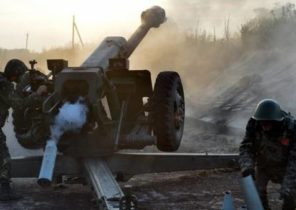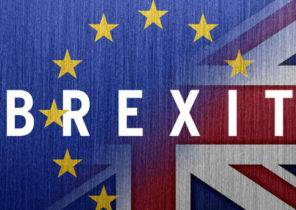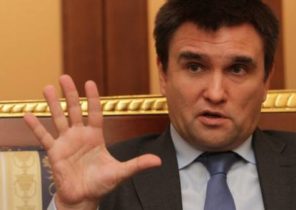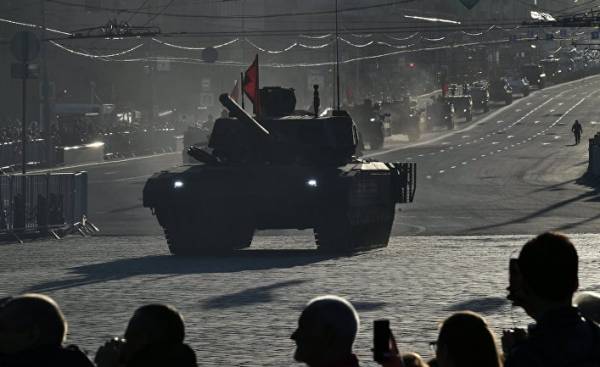
Russian aggression, Vladimir Putin and American indifference Donald trump against NATO pushing Europe to arm themselves with billions of dollars. That’s what investing military giants of the continent — and the most aggressive neighbours.
1. Germany: the world’s fourth largest arms exporter
The German defense industry is in fourth place in the world in terms of arms exports. 2016 also grow its sales at home in 2017 by as much as 7%, along with a ten percent increase in investment in equipment.
If Germany will fulfil the NATO requirements of spending 2% of GDP on defence the budget by 2024 is estimated to be 75 billion more than the current 1.2%. The main problem is that nobody knows how to invest so much money in such a short time.
New frigates MKS 180 is a bargain for the sum over 4,5 billion euros. In fact, they had to order much earlier. But negotiations with the producers involved in the tender process, including ThyssenKrupp, were delayed. As well as the purchase and improvement of the 100 tanks of the type Leopard 2, the order worth nearly EUR 800 million, which has stalled in 2015.
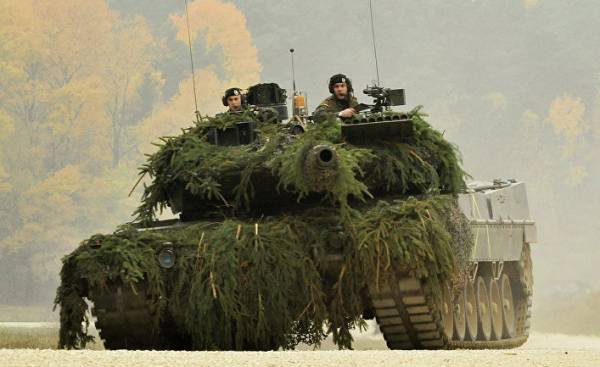 © flickr.com, U. S. Army Europe Madenote military tank Leopard II
© flickr.com, U. S. Army Europe Madenote military tank Leopard II
One of the biggest deals in a long time — ordering 131 armored type of Boxer that are made by the companies Rheinmetall and Krauss-Maffei Wegman, the leaders of the German defence industry. The order is worth almost half a billion euros.
The largest arms deals in Europe will be the future of the German-French tank with a working Main Ground Combat System (“Basic ground-fighting system”) — which will challenge the Russian “supertank” T14 Armata. Development is in full swing, but the tanks will not come before 2030.
2. France: arms exports is committed to record
A nuclear power with global interests, and after Breccia also the only EU country with a permanent representation in the UN security Council, France is a serious military power with a wide range of defense companies, leaders in their industry in the world.
With orders worth more than 20 billion euros, according to a former defense Minister Jean-Yves Le Drian, arms exports of the country is committed to a new record. Australia has ordered submarines from DCNS, India — fighter “Rafale”, produced by Dassault.
Large orders are now received also from the French defense Ministry. For example, in the framework of the “Scorpion”, which involves buying a total of 1668 armored Gryphon and 248 light tanks “Jaguar”. Provided that funding will be provided in full, it will be about the amount to five billion euros.
Another large transaction is the order of five frigates, a new class of so-called Belharra, produced by DCNS, while Thales supplies the radar and electronics. The price tag will be € 3.8 billion.
At the same time, home continue to enjoy “Raphael”, 28 new fighter jets in 2021.
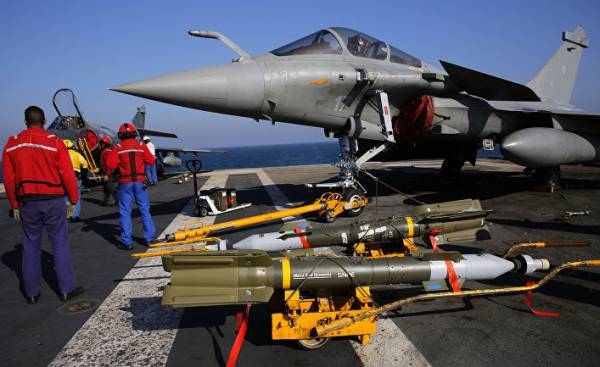 © AP Photo, Christophe Aparantsi the Rafale fighter before departure on the aircraft carrier Charles de Gaulle in the Persian Gulf
© AP Photo, Christophe Aparantsi the Rafale fighter before departure on the aircraft carrier Charles de Gaulle in the Persian Gulf
The President of France Emmanuel macron wants to 2025 to raise the defence budget to 2% of GDP. The military command wants to achieve this goal in 2022.
3. UK: invests in all at the same time
UK invests in everything from aircraft carriers to submarines with nuclear warheads. One of her largest investments in the aircraft carrier class “Queen Elizabeth”, able to accommodate 40 aircraft, worth more than five billion pounds. These ships also represent one of the largest pan-European joint projects involving the British company BAE Systems and Babcock International and French Thales.
Another major investment is the planned replacement of four Trident submarines as part of a British program of nuclear deterrence. Costs are estimated at 225 billion pounds for the whole life.
With its defense budget by nearly 40 billion pounds UK belongs to those few countries within NATO that meets the requirement of the Alliance of dismissal for the defense of 2% of GDP. In 2016 at the top of the ranking on this parameter were the United States, and they were followed by Greece and Estonia.
Prime Minister Theresa may during the election campaign promised to increase spending by 0.5% per year adjusted for inflation. After several years of cuts in real terms and against the background of the 2016 budget by half a billion pounds less than in 2010.
4. Poland is investing most of all in Eastern Europe
Poland to modernize its defense invests much more than other countries of Eastern Europe. Concerns about Russia’s actions forced Polish politicians over the past 15 years to increase defense spending by 75%.
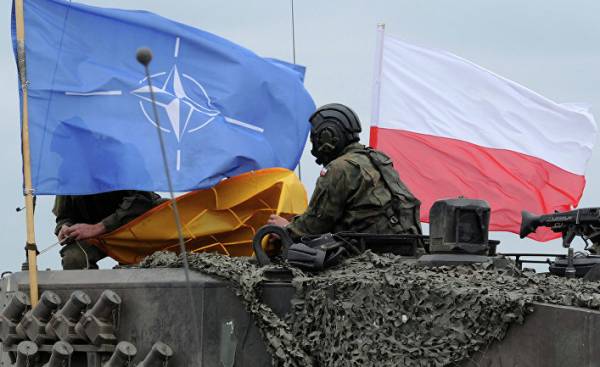 © AP Photo, Alik KepliczФлаг Poland and NATO on the Polish tank during joint exercises
© AP Photo, Alik KepliczФлаг Poland and NATO on the Polish tank during joint exercises
But in defense of the country is still many gaping holes that need to be repaired. About 70% of the weapons left from the Soviet era, and barely a third of the equipment corresponds to the NATO standards.
According to mats Andersson (Mats Andersson), the Swedish military attaché in Warsaw, Poland now primarily relies on five areas. They want to have new anti-aircraft defense, and negotiating, as well as Sweden, about how to buy American anti-missile complex “patriot”.
In addition, they increase the militia forces, and develop cyber defence. And I want to buy new ships and vehicles for the army. Of the 952 tanks, they only 247 modern.
Sweden hopes to sell Poland the new submarines. But the process is very sluggish, although the decision actually had to be made three years ago.
Polish politicians also want to use its own defense industry, to promote the overall economic development of the country.
“We can understand their way of thinking, but, nevertheless, this complicates the cooperation and becomes the cause of many of the restrictions that they impose, demanding that their domestic enterprises to a greater extent participated in,” says mats Andersson.
